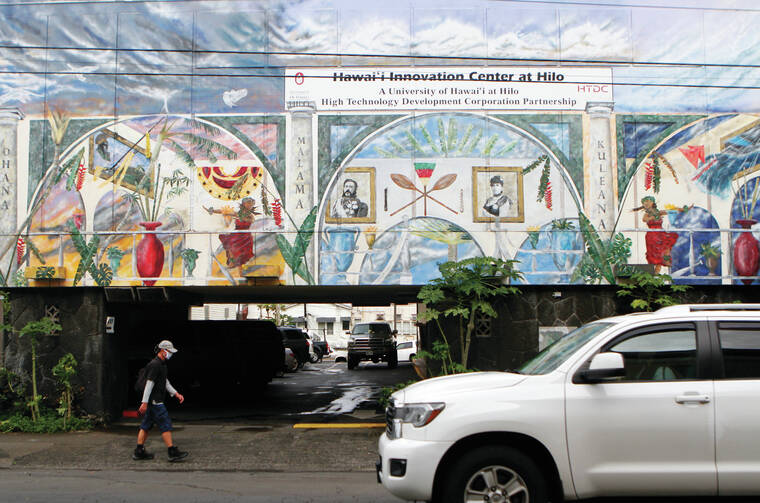Parts of Kilauea Avenue and Keawe Street will be reduced to a single lane of traffic over the next several weeks as the county prepares for a 16-month-long road rehabilitation project.
Using $12.3 million in federal funds, the county will begin a major project to improve Kilauea and Keawe between Ponahawai Street and Waianuenue Avenue in April, after the Merrie Monarch Festival ends. That project will make improvements to buried water and sewer lines, pavement, sidewalks and lane striping.
But before then, starting this week, prep work for that project will give residents a taste of what’s to come. Sherise Kana‘e-Kane, spokeswoman for the county Department of Public Works, said the county will close one lane of the road block-by-block as workers scan the road to locate the buried infrastructure.
“We’ll start from Waianuenue and go to Ponahawai,” Kana‘e-Kane said. “So we’ll start work on the makai side, and go from Waianuenue to Kalakaua Street, and then from Kalakaua to Haili Street, Haili to Mamo Street and Mamo to Ponahawai.
“And then we go back to Waianuenue and do it again on the mauka side,” Kana‘e-Kane said.
Kana‘e-Kane estimated that scanning each block will take about a week at a time, so that scanning both lanes of the entire stretch of road should be completed right before Merrie Monarch begins on April 9.
“We’re not doing any work on the road during Merrie Monarch,” Kana‘e-Kane reassured residents.
During a community meeting about the greater rehabilitation project on Thursday, Public Works Director Stephen Pause acknowledged that the lane closures will cause inconvenience, but added that he has faith that the project will not fall victim to the endless delays that plagued the rehabilitation project on Kalanianaole Street — which was completed last year after nearly five years.
“This has federal money, which means it has a deadline,” Pause said, adding that different people are in charge now than when the Kalanianaole project began.
During the 16 months of work — the project is expected to end August 2024 — Pause explained that each phase of work will close the makai side of the road block-by-block from Waianuenue Avenue to Ponahawai Street and then the same on the mauka side. During the first phase, workers will replace water and sewer lines beneath the road, and then repave the road in the second phase and then repair sidewalks in the third phase.
DPW Engineering Division Chief Keone Thompson said the project is “the most expensive one-third of a mile project (he’s) ever done.”
A few dozen residents attended Thursday’s meeting, and were mostly supportive of the project, although some were concerned that the project may not be in line with the county’s Downtown Hilo Multimodal Master Plan, a 2017 plan to revitalize downtown Hilo by improving road and pedestrian infrastructure.
But Kana‘e-Kane and Pause said that the federal funds can only be used to repair and rehabilitate existing infrastructure, and cannot add new features or amenities that aren’t already there. Nonetheless, Kana‘e-Kane said that some aspects of the Master Plan that could be implemented into the rehabilitation project have been, including the addition of greater bike infrastructure.
Additional striping and signage will add a dedicated bike lane between Ponahawai and Mamo streets, and one lane between Mamo and Waianuenue Avenue will be a shared lane for bikes and cars, Kana‘e-Kane said.
Meanwhile, once the project is over, the county will convert a construction staging area at the corner of Ponahawai Street and Kilauea Avenue into a public parking lot.
Email Michael Brestovansky at mbrestovansky@hawaiitribune-herald.com.






